 W
WThe Apalachee massacre was a series of raids by English colonists from the Province of Carolina and their Indian allies against a largely peaceful population of Apalachee Indians in northern Spanish Florida that took place in 1704, during Queen Anne's War. Against limited Spanish and Indian resistance, a network of missions was destroyed; most of the population either was killed or captured, fled to larger Spanish and French outposts, or voluntarily joined the English.
 W
WThe Battle of Big Dry Wash was fought on July 17, 1882, between troops of the United States Army's 3rd Cavalry Regiment and 6th Cavalry Regiment and members of the White Mountain Apache tribe.The location of the battle was called "Big Dry Wash" in Major Evans' official report, but later maps called the location "Big Dry Fork", which is how it is cited in the four Medal of Honor citations that resulted from the battle.
 W
WThe Blackberry Campaign is the name given to a May 1791 expedition led by Charles Scott against Native Americans of the lower Wabash Valley, primarily Wea, Kickapoo, Miami, and Potawatomi. The intent of the campaign was to demonstrate the vulnerability of Native American villages in the Northwest Territory, to take captives who could be used for peace negotiations, and to keep the forces of the Western Confederacy off balance in preparation for a larger 1791 led by Arthur St. Clair. The name Blackberry Campaign was given because soldiers stopped to pick berries to supplement their food supplies.
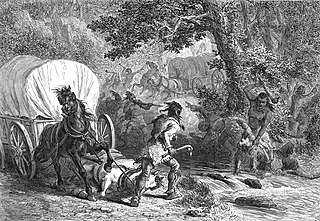 W
WThe Battle of Bloody Brook was fought on September 18, 1675 OS between English colonial militia from the Massachusetts Bay Colony and a band of Indians led by the Nipmuc sachem Muttawmp, during King Philip's War. The Indians ambushed colonists escorting a train of wagons carrying the harvest from Deerfield to Hadley, and killed at least 40 militia men and 17 teamsters out of a company that included 79 militia.
 W
WThe Battle of Bloody Creek was fought on 10/21 June 1711 during Queen Anne's War. An Abenaki militia successfully ambushed British and New England soldiers at a place that became known as Bloody Creek after the battles fought there. The creek empties into the Annapolis River at present day Carleton Corner, Nova Scotia, and was also the location of a battle in 1757.
 W
WThe Battle of Blue Licks, fought on August 19, 1782, was one of the last battles of the American Revolutionary War. The battle occurred ten months after Lord Cornwallis's surrender at Yorktown, which had effectively ended the war in the east. On a hill next to the Licking River in what is now Robertson County, Kentucky, a force of about 50 Loyalists along with 300 American Indians ambushed and routed 182 Kentucky militiamen. It was the last victory for the Loyalists and Indians during the frontier war. British, Loyalist and Native Indian forces would engage in fighting with American forces once more the following month in Wheeling, West Virginia, during the Siege of Fort Henry.
 W
WThe Siege of Boonesborough took place in September 1778 during the American Revolutionary War. The attack on the Kentucky settlement of Boonesborough was led by Chief Blackfish, a Shawnee leader allied to the British. Months before the battle, Blackfish had captured and adopted Daniel Boone, the founder of Boonesborough. Boone escaped the Shawnees in time to lead the defense of the settlement. Blackfish's siege was unsuccessful and was lifted after ten days. Boone was then court-martialed by fellow officers who suspected him of having British sympathies. Boone was acquitted, but he soon moved away from Boonesborough.
 W
WThe Boyd and Parker ambush was a minor military engagement in Groveland, New York on September 13, 1779, during the American Revolutionary War. A scout group of the Sullivan Expedition was ambushed and captured by Loyalists and their Seneca Indian allies led by Little Beard.
 W
WThe Battle of Cañada was a popular insurrection against the American occupation of New Mexico by Mexicans and Pueblo Indians. It took place on January 24, 1847, during the Taos Revolt, a conflict of the Mexican–American War.
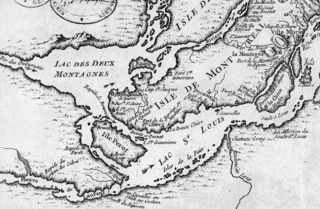 W
WThe Battle of the Cedars was a series of military confrontations early in the American Revolutionary War during the Continental Army's invasion of Canada that had begun in September 1775. The skirmishes, which involved limited combat, occurred in May 1776 at and around the Cedars, 45 km (28 mi) west of Montreal, British North America. Continental Army units were opposed by a small force of British troops leading a larger force of Indians and militia.
 W
WThe Battle of Chillicothe was part of the western theater of the American Revolutionary War.
 W
WThe Battle of Chocontá was one of a series of battles in the ongoing conflict between the northern and southern Muisca of pre-Columbian central Colombia. The battle was fought c. 1490 in the vicinity of Chocontá. An army of 50,000 southern Muisca guecha warriors, led by their ruler, or zipa, Saguamanchica, attacked 60,000 northern Muisca troops commanded by Zaque Michuá, who was supported by the Cacique of Guatavita.
 W
WThe Battle of Cobleskill was an American Revolutionary War raid on the frontier settlement of Cobleskill, New York on May 30, 1778. The battle, having taken place in the modern-day hamlet of Warnerville, New York, near the modern (2019) Cobleskill-Richmondville High School, marked the beginning of a phase in which Loyalists and Iroquois, encouraged and supplied by British authorities in the Province of Quebec, raided and destroyed numerous villages on what was then the United States western frontier of New York and Pennsylvania.
 W
WThe Crawford expedition, also known as the Sandusky expedition and Crawford's Defeat, was a United States campaign from May to June of 1782 on the western front of the American Revolutionary War, and one of the final operations of the conflict. Led by Colonel William Crawford, the campaign's goal was to destroy enemy Native American towns along the Sandusky River in the Ohio Country, with the hope of ending Indian attacks on American settlers. The expedition was one in a long series of raids against enemy settlements which both sides had conducted throughout the war.
 W
WThe Crow Creek massacre occurred around the mid 1300s CE between Native American groups at a site along the Missouri River in the South Dakota area; it is now within the Crow Creek Indian Reservation. Crow Creek Site, the site of the massacre near Chamberlain, is an archaeological site and a U.S. National Historic Landmark, located at coordinates 43°58′48″N 99°19′54″W. An excavation of part of the site was done in the 1950s, with additional excavations in 1978 and later.
 W
WThe Battle of Fallen Timbers was the final battle of the Northwest Indian War, a struggle between Native American tribes affiliated with the Western Confederacy and their British allies, against the nascent United States for control of the Northwest Territory. The battle took place amid trees toppled by a tornado near the Maumee River in northwestern Ohio at the site of the present-day city of Maumee, Ohio.
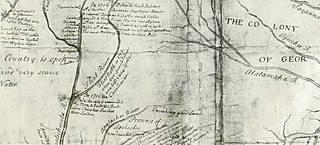 W
WThe Battle of Flint River was a failed attack by Spanish and Apalachee Indian forces against Creek Indians in October 1702 in what is now the state of Georgia. The battle was a major element in ongoing frontier hostilities between English traders from the Province of Carolina and Spanish Florida, and it was a prelude to more organized military actions of Queen Anne's War.
 W
WThe Siege of Fort Henry was an attack on American militiamen during the American Revolutionary War near the Virginia outpost known as Fort Henry by a mixed band of Indians in September 1777. The fort, named for Virginia Governor Patrick Henry, was at first defended by only a small number of militia, as rumors of the Indian attack had moved faster than the Indians, and a number of militia companies had left the fort. The American settlers were successful in repulsing the Indian attack.
 W
WThe Siege of Fort Henry took place from September 11 to 13, 1782, during the American Revolutionary War. A force of about 300 Wyandot, Shawnee, Seneca and Delaware Indians laid siege to Fort Henry, an American outpost at what is now Wheeling, West Virginia, accompanied by a force of 50 British officers and Loyalists from Butler's Rangers. The siege is commonly known as, "The Last Battle of the Revolutionary War," despite subsequent skirmishes between Patriots and Loyalists involving the loss of life taking place in New Jersey later in 1782; though these were more unorganized outbreaks of fighting between patrons with opposing sentiment than engagements between belligerents.
 W
WThe siege of Fort Stanwix in 1777 began on August 2 and ended August 22. Fort Stanwix, in the western part of the Mohawk River Valley, was then the primary defense point for the Continental Army against British and Indian forces aligned against them in the American Revolutionary War. The fort was occupied by Continental Army forces from New York and Massachusetts under the command of Colonel Peter Gansevoort. The besieging force was composed of British regulars, American Loyalists, Hessian soldiers from Hesse-Hanau, and Indians, under the command of British Brigadier General Barry St. Leger and the Iroquois leader Joseph Brant. St. Leger's expedition was a diversion in support of General John Burgoyne's campaign to gain control of the Hudson River Valley to the east.
 W
WThe Lancaster Raid was the first in a series of five planned raids on English colonist towns during the winter of 1675 as part of King Philip's War. Metacom, known by English colonists as King Philip, was a Wampanoag sachem involved in leading and organizing Wampanoag warriors during the war. Teaming up with Nipmucs and Narragansetts, Wampanoag warriors were able to successfully raid the town of Lancaster, securing provisions and prisoners to help them carry onward into their winter offensive.
 W
WLochry's Defeat, also known as the Lochry massacre, was a battle fought on August 24, 1781, near present-day Aurora, Indiana, in the United States. The battle was part of the American Revolutionary War (1775–1783), which began as a conflict between Great Britain and the Thirteen Colonies before spreading to the western frontier, where American Indians entered the war as British allies. The battle was short and decisive: about one hundred Indians of local tribes led by Joseph Brant, a Mohawk military leader who was temporarily in the west, ambushed a similar number of Pennsylvania militiamen led by Archibald Lochry. Brant and his men killed or captured all of the Pennsylvanians without suffering any casualties.
 W
WThe Battle of Minisink was a battle of the American Revolutionary War fought at Minisink Ford, New York, on July 22, 1779. It was the only major skirmish of the Revolutionary War fought in the northern Delaware Valley. The battle was a decisive British victory, as the colonial militia was hastily assembled, ill-equipped, and inexperienced.
 W
WThe Mohawk Valley raid was conducted against three Mohawk villages located in the Mohawk River valley by French and Indian warriors under the overall command of Nicolas d'Ailleboust de Manthet. The action, part of a long-running French-Iroquois conflict and King William's War, which pitted the French against the Iroquois-allied English, resulted in the destruction of three villages, including critical stores of food. Many Mohawk were either killed or captured, with the latter intended to populate Christian Indian villages near Montreal.
 W
WThe Narváez expedition was a Spanish journey of exploration and colonization started in 1527 that intended to establish colonial settlements and garrisons in Florida. The expedition was initially led by Pánfilo de Narváez, who died in 1528. Many more people died as the expedition traveled west along the explored Gulf Coast of the present-day United States and into the American Southwest. Only four of the expedition's original members survived, reaching Mexico City in 1536. These survivors were the first known Europeans, and the first African, to see the Mississippi River, and to cross the Gulf of Mexico and Texas.
 W
WThe Norridgewock Raid occurred in contested lands being fought over by England, France, and the Wabanaki Confederacy, during the colonial frontier conflict referred to as Governor Dummer's War. Despite being called a 'battle' by some, the raid was essentially a massacre of Indians by colonial British troops. Captains Johnson Harmon, Jeremiah Moulton, and Richard Bourne (Brown) led a force of two hundred colonial New Englanders, which attacked the Abenaki village of Narantsouak, or Norridgewock, on the Kennebec River; the current town of Norridgewock, Maine developed near there. The village was led by, among others, the sachems Bomazeen and Welákwansit, known to the English as Mog. The village's Catholic mission was run by a French Jesuit priest, Father Sébastien Râle.
 W
WThe Peach Tree War, also known as the Peach War, was a large-scale attack on September 15, 1655 by the Susquehannock Indians and allied tribes on several New Netherland settlements along the North River.
 W
WThe Siege of Pemaquid was a successful attack by a large band of Abenaki Indians on the English fort at Pemaquid, Fort Charles, then the easternmost outpost of colonial Massachusetts. The French-Abenaki attack was led by Jean-Vincent d'Abbadie de Saint-Castin and Father Louis-Pierre Thury and Chief Moxus. The fall of Pemaquid was a significant setback to the English. It pushed the frontier back to Casco (Falmouth), Maine.
 W
WThe Siege of Pemaquid occurred during King William's War when French and Native forces from New France attacked the English settlement at Pemaquid, a community on the border with Acadia. The siege was led by Pierre Le Moyne d'Iberville and Baron de St Castin between August 14–15, 1696. Commander of Fort William Henry, Captain Pasco Chubb, surrendered the fort. Iberville killed three of the soldiers and sent the other 92 back to Boston.
 W
WThe Siege of Pensacola was two separate attempts in 1707 by English-supported Creek Indians to capture the town and fortress of Pensacola, one of two major settlements in Spanish Florida.
 W
WThe Battle of Pequawket occurred on May 9, 1725 (O.S.), during Father Rale's War in northern New England. Captain John Lovewell led a privately organized company of scalp hunters, organized into a makeshift ranger company, and Chief Paugus led the Abenaki at Pequawket, the site of present-day Fryeburg, Maine. The battle was related to the expansion of New England settlements along the Kennebec River.
 W
WThe Battle of Piqua, was a military engagement fought on Aug. 8, 1780 at the Indian village of Piqua along the Mad River in western Ohio Country between the Kentucky militia under Gen. George Rogers Clark and Shawnee Indians under Chief Black Hoof. The Indians were driven off and the village and surrounding fields burned, but Clark suffered daunting casualties.
 W
WPontiac's War, also known as Pontiac's Conspiracy or Pontiac's Rebellion, was launched in 1763 by a loose confederation of American Indian tribes, primarily from the Great Lakes region, the Illinois Country, and Ohio Country who were dissatisfied with British policies in the Great Lakes region following the French and Indian War (1754–1763). Warriors from numerous tribes joined the uprising in an effort to drive British soldiers and settlers out of the region. The war is named after Odawa leader Pontiac, the most prominent of many Indian leaders in the conflict.
 W
WThe Siege of Pueblo de Taos was the final battle during the main phase of the Taos Revolt, an insurrection against the United States during the Mexican–American War. It was also the final major engagement between American forces and insurgent forces in New Mexico during the war.
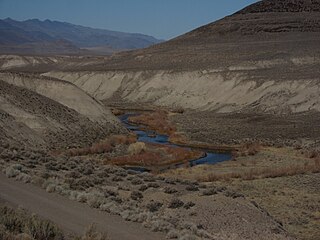 W
WThe Second Battle of Pyramid Lake took place in response to the U.S. defeat at the First Battle of Pyramid Lake. A well-organized force of militia and regulars, under the capable leadership of famed Texas Ranger Col. John C. "Jack" Hays, defeated the Paiute warriors under Chief Numaga. This was the final engagement of the Pyramid Lake War of 1860.
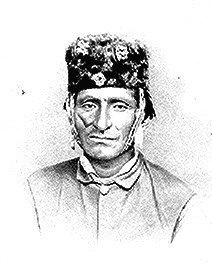 W
WThe Battle of Sand Butte or the Thomas Massacre was a clash between the Modoc Indians and the United States 12th Infantry Regiment in the Modoc War. A small force of US troops were ambushed and nearly wiped out by Modoc warriors led by Scarface Charley. Ten days after the battle, the dead bodies of the soldiers were discovered by a patrol.
 W
WSt. Clair's defeat, also known as the Battle of the Wabash, the Battle of Wabash River or the Battle of a Thousand Slain, was a battle fought on November 4, 1791, in the Northwest Territory of the United States of America. The U.S. Army faced the Western Confederacy of Native Americans, as part of the Northwest Indian War. It was "the most decisive defeat in the history of the American military" and its largest defeat ever by Native Americans.
 W
WThe First Battle of the Stronghold was the second battle in the Modoc War of 1872–1873. The battle was fought between the United States Army under Lieutenant Colonel Frank Wheaton and a band of the Native American Modoc tribe from Oregon and California, led by Captain Jack.
 W
WThe Second Battle of the Stronghold was a battle during the Modoc War between a band of the Native American Modoc tribe and the Army of the United States, in northeastern California. The battle began on April 15, 1873, and ended on April 17, 1873. The Army succeeded in forcing the Modoc to abandon their fortified position at Captain Jack's Stronghold in the Lava Beds, but failed to capture the band.
 W
WThe Sudbury Fight was a battle of King Philip's War, fought in what is today Sudbury and Wayland, Massachusetts, when approximately five hundred Wampanoag, Nipmuc, and Narragansett Native Americans raided the frontier settlement of Sudbury in Massachusetts Bay Colony. Disparate companies of English militiamen from nearby settlements marched to the town's defense, two of which were drawn into Native ambushes and suffered heavy losses. The battle was the last major Native American victory in King Philip's War before their final defeat in southern New England in August 1676.
 W
WThe Battle of Sugar Point, or the Battle of Leech Lake, was fought on October 5, 1898 between the 3rd U.S. Infantry and members of the Pillager Band of Chippewa Indians in a failed attempt to apprehend Pillager Ojibwe Bugonaygeshig, as the result of a dispute with Indian Service officials on the Leech Lake Reservation in Cass County, Minnesota.
 W
WThe Battle of Toppenish Creek was the first engagement of the Yakima War in Washington. Fought on October 5, 1855, a company of American soldiers, under Major Granville O. Haller, was attacked by a band of Yakamas, under Chief Kamiakin, and compelled to retreat. The battle occurred in Yakima Valley, 113 miles northwest of Fort Walla Walla, along Toppenish Creek and was a major victory for Native American forces.
 W
WThe Siege of Tubac was a siege of the Apache Wars, between settlers and militia of Confederate Arizona and Chiricahua Apaches. The battle took place at Tubac in the present day southern Arizona. The actual dates of this engagement have been lost to time.
 W
WThe Battle of Turner's Falls or Battle of Great Falls; also known as the Peskeompscut massacre or the "Wissantinnewag massacre", was fought on May 19, 1676, during King Philip's War, in present-day Gill, Massachusetts, near a falls on the Connecticut River. The site is across the river from the village of Turners Falls. This was one of the most important conflicts of King Philip's War, as it marked a turning point in the conflict that would eventually lead to the war's end.
 W
WThe Battle of Union Gap, or the Battle at Union Gap, was the second engagement of the Yakama War, fought on November 9 and 10, 1855. It began when a large force of about 700 American soldiers, under Major Gabriel J. Rains, discovered Chief Kamiakin's village of around 300 braves and several women and children, along the Yakima River. In the following two-day battle only one "non-combatant" was killed by accident and the Yakama men were forced to retreat with their women and children.
 W
WThe Battle of Wild Cat Creek was the result of a November 1812 punitive expedition against Native American villages during the War of 1812. It has been nicknamed "Spur's Defeat", which is thought to refer to the spurs used by the soldiers to drive their horses away from the battle as quickly as possible. The campaign is sometimes referred to as the Second Battle of Tippecanoe.
 W
WThe Wounded Knee Occupation began on February 27, 1973, when approximately 200 Oglala Lakota and followers of the American Indian Movement (AIM) seized and occupied the town of Wounded Knee, South Dakota, on the Pine Ridge Indian Reservation. Paul Manhart S.J. and ten other residents of the area were apprehended at gunpoint and taken hostage. The protest followed the failure of an effort of the Oglala Sioux Civil Rights Organization (OSCRO) to impeach tribal president Richard Wilson, whom they accused of corruption and abuse of opponents. Additionally, protesters criticized the United States government's failure to fulfill treaties with Native American people and demanded the reopening of treaty negotiations to hopefully arrive at fair and equitable treatment of Native Americans.
 W
WThe Wounded Knee Massacre, also known as the Battle of Wounded Knee, was a domestic massacre of nearly three hundred Lakota people by soldiers of the United States Army. It occurred on December 29, 1890, near Wounded Knee Creek on the Lakota Pine Ridge Indian Reservation in the U.S. state of South Dakota, following a botched attempt to disarm the Lakota camp. The previous day, a detachment of the U.S. 7th Cavalry Regiment commanded by Major Samuel M. Whitside intercepted Spotted Elk's band of Miniconjou Lakota and 38 Hunkpapa Lakota near Porcupine Butte and escorted them 5 miles (8.0 km) westward to Wounded Knee Creek, where they made camp. The remainder of the 7th Cavalry Regiment, led by Colonel James W. Forsyth, arrived and surrounded the encampment. The regiment was supported by a battery of four Hotchkiss mountain guns.